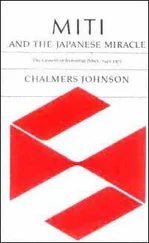Chalmers Johnson - Blowback, Second Edition - The Costs and Consequences of American Empire
Здесь есть возможность читать онлайн «Chalmers Johnson - Blowback, Second Edition - The Costs and Consequences of American Empire» весь текст электронной книги совершенно бесплатно (целиком полную версию без сокращений). В некоторых случаях можно слушать аудио, скачать через торрент в формате fb2 и присутствует краткое содержание. Год выпуска: 0101, ISBN: 0101, Издательство: Macmillan, Жанр: Старинная литература, на английском языке. Описание произведения, (предисловие) а так же отзывы посетителей доступны на портале библиотеки ЛибКат.
- Название:Blowback, Second Edition: The Costs and Consequences of American Empire
- Автор:
- Издательство:Macmillan
- Жанр:
- Год:0101
- ISBN:9780805075595
- Рейтинг книги:5 / 5. Голосов: 1
-
Избранное:Добавить в избранное
- Отзывы:
-
Ваша оценка:
- 100
- 1
- 2
- 3
- 4
- 5
Blowback, Second Edition: The Costs and Consequences of American Empire: краткое содержание, описание и аннотация
Предлагаем к чтению аннотацию, описание, краткое содержание или предисловие (зависит от того, что написал сам автор книги «Blowback, Second Edition: The Costs and Consequences of American Empire»). Если вы не нашли необходимую информацию о книге — напишите в комментариях, мы постараемся отыскать её.
Blowback, Second Edition: The Costs and Consequences of American Empire — читать онлайн бесплатно полную книгу (весь текст) целиком
Ниже представлен текст книги, разбитый по страницам. Система сохранения места последней прочитанной страницы, позволяет с удобством читать онлайн бесплатно книгу «Blowback, Second Edition: The Costs and Consequences of American Empire», без необходимости каждый раз заново искать на чём Вы остановились. Поставьте закладку, и сможете в любой момент перейти на страницу, на которой закончили чтение.
Интервал:
Закладка:
It is not an exaggeration to say that the Chinese revolution was in part fought to be rid of this demeaning provision, which lasted in China until 1943. The Western insistence on extraterritoriality reflected the belief that Asian law was barbaric and that no “civilized” person should be subjected to it. In actuality, all sorts of Chinese criminals took advantage of it, claiming Christian conversion or other ruses to ingratiate themselves with one or another imperialist power in order to place themselves beyond the reach of local laws.
Article 17, section 5, of the Japan-U.S. Status of Forces Agreement (SOFA) stipulated: “When U.S. servicemen and their families commit crimes, they shall be detained by U.S. authorities until Japanese law enforcement agencies file complaints with the prosecutors’ office based on clear suspicion.” While not quite full-blown extraterritoriality, it gave U.S. authorities the right to refuse Japanese investigators’ requests to hand over suspects attached to the military. Delays built into the system were often used as opportunities to transfer American suspects back to the United States, where they were beyond the reach of Japanese authorities.
Under the pressure of escalating protests in Okinawa and mainland Japan following news of the rape, the United States and Japan signed a “side letter” to SOFA allowing G.I.s suspected of rape or murder to be placed in Japanese custody before being indicted if Japanese investigators request it. This represented a distinct break in American global policies. In Korea, suspects still get handed over to local authorities only after being convicted by a U.S. military court. Similarly, in Italy, the American fliers charged in 1998 with flying so low that their jet cut a ski-lift cable, plunging twenty skiers to their deaths, were returned to the States for a military trial where, to the outrage of Italians, they were exonerated of responsibility. It is, of course, unimaginable that Americans would accept such special treatment for foreign military personnel visiting or training in our country. And that is precisely what breeds such a deep sense of injustice among Okinawans.
Certainly, the initial American response to the rape caused the greatest crisis in Japanese-American relations since a tumultuous struggle against the renewal of the security treaty in 1960. No one should be surprised to discover, however, that the sexual offenses that had plagued Okinawans did not abate. Only three months later, in December 1995, the U.S. military released a composite sketch of an American suspected of raping a woman at knifepoint near Futenma Marine Corps Air Station. Ben Takara, an Okinawan poet and chemistry teacher at Futenma Senior High School, told Newsweek , “We once surveyed our girl students, asking if they had had any scary experiences with U.S. soldiers on their way to school or back home. One-third to one-half of the students answered yes. . . . The rape case . . . was just the tip of the iceberg. I must say that the Japan-U.S. security treaty has not protected the safety of Okinawans.” 15
Many of the acts that so disrupt Okinawan life are less sensational than rape but no less disturbing to the people of that island. Traffic accidents are an example. On a Sunday in early January 1996, four months after the rape that had allegedly caused the U.S. military to tighten up discipline, a female marine from the air base at Futenma drove off the road and onto a sidewalk at high speed in Chatan, near Kadena Air Force Base, killing Rojita Kinjo, thirty-six, and her daughters, Mitsuko, ten, and Mariko, one. Lance Corporal Lori Padilla, twenty, the driver, pleaded guilty to a charge of professional negligence leading to death. It may be that she was confused by driving on the left side of the road, as is the custom in Japan. She received a two-year prison sentence.
Five months later, the remaining Kinjo family sued Padilla and the two marine co-owners of the car in the Naha District Court for sixty-two million yen (about $580,000) as a solatium to compensate them for the emotional losses due to the deaths of their relatives. The payment of a solatium in the case of accidents of all kinds is an essential and longaccepted part of Japanese culture. None of the defendants appeared at the trial, one having already left for the United States (the average tour of duty for American service personnel in Okinawa is only six months). In December, the court ordered Padilla and her two codefendants to pay the sum requested, but the second codefendant had by then also left Japan and was untraceable. Padilla had neither savings nor insurance. Ultimately the U.S. military paid the family twenty-five million yen (40 percent of the total) but extracted from them, in return, a statement that this was a gift from the U.S. government and that the family in accepting it gave up any further claims against the United States. At this point, the Japanese government paid the remaining thirty-seven million yen to the victims’ family.
It was noted that at the time of the accident the driver was neither arrested nor checked to see if she was drunk but was instead transported to a military hospital. This was, of course, only one of just over a thousand auto accidents each year in Okinawa involving U.S. service personnel (slightly under two thousand for Japan as a whole), and it was quite typical in that American drivers normally do not have insurance (or at least not enough) and have often left Japan by the time Okinawan victims catch up to them in court.
Not until after the rape incident of September 1995, as part of an effort to reduce the American “footprint” in Okinawa (as Secretary of Defense Perry called it) and fifty-one years after their arrival in Okinawa, did American military cars and trucks begin to carry license plates. Prior to that Okinawans usually had no way of identifying a vehicle that collided with theirs or injured them. It took the “sacrifice of a schoolgirl,” noted the Okinawa Times , to achieve any progress at all in making “good neighbors” out of the Americans. 16There are still about fifteen thousand licensed drivers at Kadena Air Force Base and another twenty-five thousand affiliated with the marines on Okinawa, including service personnel and Department of Defense civilians, teachers, and dependents, who also pay specially reduced automobile taxes. By one estimate, were they to pay at Japanese rates, the incomes of the Okinawan prefectural government and the Tokyo municipal government would increase by ¥250 million and ¥200 million respectively.
In February 1996, a month after the Padilla case, a nineteen-year-old on a motor scooter was struck and killed by a car driven by a U.S. Navy chief petty officer. The young man’s father, Daisuke Ebihara, a mainland schoolteacher, described the callous attitudes of U.S. military representatives to a reporter for the Japan Times . “Nobody . . . attended the funeral or sent a telegram or wreath of condolence. And a Japanese working for the U.S. military phoned my wife and urged us not to engage a lawyer, saying it would be cheaper. Even before I got to the hospital, they were telling me ‘we will decide how much compensation you get.’ ” 17An American spokesman, Major Kevin Krejcarek, admitted that the U.S. forces had not properly understood how to handle the custom of a solatium in Japanese culture. This prompted Dr. Robert Orr of Nippon Motorola and the American Chamber of Commerce in Japan to comment that there is something wrong when a military that has occupied Okinawa for half a century has never heard of such a basic aspect of local judicial custom.
On October 7, 1998, the inevitable again happened. A twenty-two-year-old marine corporal, drunk and driving at high speed, knocked an eighteen-year-old high school student, Yuki Uema, off her motorbike. He fled, only to be apprehended by an alert guard at his base who noticed the heavy damage to the front of his car. Possibly because the marine failed to help his victim, she died a week later, without regaining consciousness. U.S. forces then refused to hand over the suspect to the local police for a week, on the grounds that under the Status of Forces Agreement, the United States did not have to give up suspects except in “heinous crimes” until a Japanese court indicted them. The American ambassador and the Japanese prime minister were quick this time to express their condolences and to offer money as compensation; they recognized that much—from large-scale arms sales to the Japanese place in U.S. global strategy—might be at stake. A Japanese court sentenced the hit-and-run marine to twenty months in prison, and in March 1999, the Marine Corps started sending patrols of off-duty marines to the bar districts around Futenma, Kadena, Camp Foster, and Camp Hansen in a limited attempt to curb drunkenness and lawlessness among service personnel and their dependents.
Читать дальшеИнтервал:
Закладка:
Похожие книги на «Blowback, Second Edition: The Costs and Consequences of American Empire»
Представляем Вашему вниманию похожие книги на «Blowback, Second Edition: The Costs and Consequences of American Empire» списком для выбора. Мы отобрали схожую по названию и смыслу литературу в надежде предоставить читателям больше вариантов отыскать новые, интересные, ещё непрочитанные произведения.
Обсуждение, отзывы о книге «Blowback, Second Edition: The Costs and Consequences of American Empire» и просто собственные мнения читателей. Оставьте ваши комментарии, напишите, что Вы думаете о произведении, его смысле или главных героях. Укажите что конкретно понравилось, а что нет, и почему Вы так считаете.










